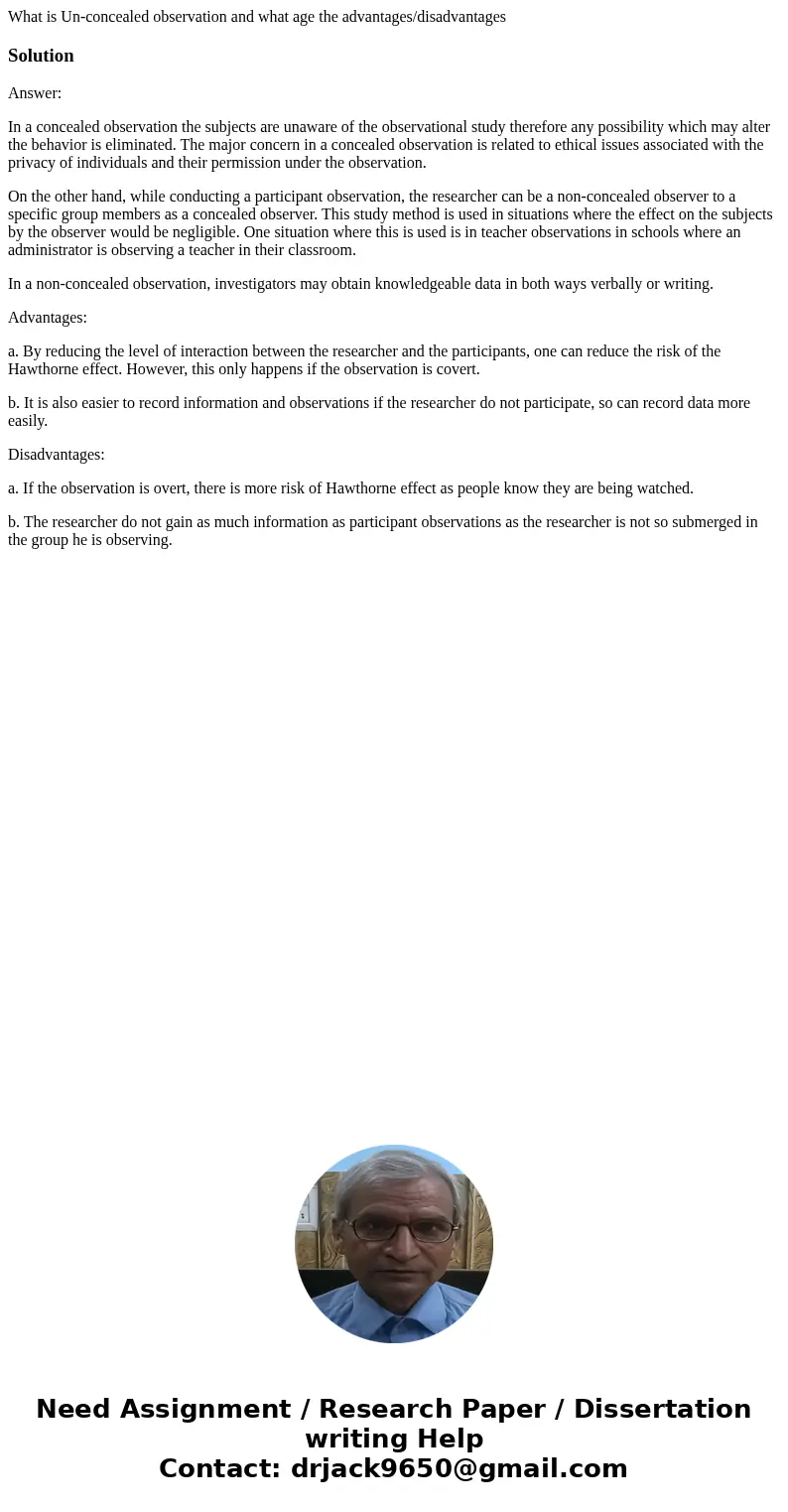What is Unconcealed observation and what age the advantagesd
What is Un-concealed observation and what age the advantages/disadvantages
Solution
Answer:
In a concealed observation the subjects are unaware of the observational study therefore any possibility which may alter the behavior is eliminated. The major concern in a concealed observation is related to ethical issues associated with the privacy of individuals and their permission under the observation.
On the other hand, while conducting a participant observation, the researcher can be a non-concealed observer to a specific group members as a concealed observer. This study method is used in situations where the effect on the subjects by the observer would be negligible. One situation where this is used is in teacher observations in schools where an administrator is observing a teacher in their classroom.
In a non-concealed observation, investigators may obtain knowledgeable data in both ways verbally or writing.
Advantages:
a. By reducing the level of interaction between the researcher and the participants, one can reduce the risk of the Hawthorne effect. However, this only happens if the observation is covert.
b. It is also easier to record information and observations if the researcher do not participate, so can record data more easily.
Disadvantages:
a. If the observation is overt, there is more risk of Hawthorne effect as people know they are being watched.
b. The researcher do not gain as much information as participant observations as the researcher is not so submerged in the group he is observing.

 Homework Sourse
Homework Sourse